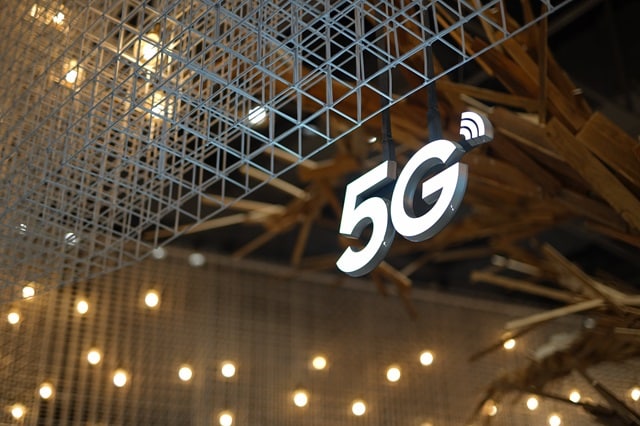The Dawn of Vo5G: A New Era in Indian Connectivity

The transition from Voice over Long-Term Evolution (VoLTE) to Voice over 5G (Vo5G) marks a significant turning point in the telecommunications sector, especially for a country like India, which boasts one of the world’s largest telecom markets.
Vo5G is the latest development in voice services, enabling voice calls to be made over a 5G network. This technology promises superior voice quality, reduced latency, and increased efficiency compared to VoLTE. Vo5G operates on the principle of packet switching, similar to VoLTE, but with the added advantage of the 5G network’s higher bandwidth and lower latency.
The introduction of Vo5G in India is expected to revolutionize communication by offering superior call quality and seamless connectivity. It could also play a crucial role in bridging the digital divide in the country by providing high-quality voice services in remote and rural areas.
The timeline for the rollout of Vo5G in India is currently under speculation. However, given the Indian government’s proactive approach towards adopting advanced technologies and the ongoing efforts of telecom operators, it is expected that Vo5G services will be launched in India shortly.
What is Vo5G?
Vo5G, or voice over 5G, is the latest advancement in voice services. It is the technology that allows voice calls to be made over a 5G network, similar to how VoLTE allows voice calls over a 4G LTE network. Vo5G promises superior voice quality, lower latency, and improved efficiency compared to its predecessor, VoLTE.
How Does Vo5G Work?
Vo5G operates on the principle of packet switching, similar to VoLTE. In simple terms, it converts voice signals into digital packets and transmits them over the 5G network. The key difference lies in the network infrastructure. 5G networks offer higher bandwidth and lower latency compared to 4G networks, resulting in improved call quality and connectivity.
The Impact of Vo5G on India
India, with its vast population and increasing digital literacy, stands to benefit immensely from the introduction of Vo5G. The technology promises to revolutionize the way Indians communicate by offering superior call quality and seamless connectivity.
Moreover, Vo5G could play a crucial role in bridging the digital divide in India. By providing high-quality voice services even in remote and rural areas, Vo5G can ensure that every Indian, irrespective of their location, has access to reliable communication services.
When is India Getting Vo5G?
The timeline for the rollout of Vo5G in India is currently under speculation. However, with the Indian government’s proactive approach towards adopting advanced technologies and the ongoing efforts of telecom operators, it is expected that Vo5G services will be launched in India in the near future.
Here is the comparison of voice services over 2G, 3G, 4G, and 5G:
| Generation | Voice Service | Key Features | Speed | Voice Transmission Method |
|---|---|---|---|---|
| 2G | Circuit-Switched Data (CSD) | Low data rate, suitable for voice calls and text | Up to 64 kbps | Circuit Switching |
| 3G | Circuit Switched Voice | Improved call quality, introduction of video calling | Up to 2 Mbps | Circuit Switching |
| 4G | Voice over LTE (VoLTE) | High-quality voice calls, efficient use of spectrum | Up to 100 Mbps | Packet Switching |
| 5G | Voice over 5G (Vo5G) | Superior voice quality, lower latency, improved efficiency | Up to 10 Gbps | Packet Switching |
- The best 5G plans in the US: Which carrier is right for you?
- How to Fix 5G Missing from Preferred Network Type on Android?
Conclusion
The dawn of Vo5G marks the beginning of a new era in Indian connectivity. As we move forward, it is exciting to envision the transformative impact this technology will have on India’s telecommunications landscape. As we say goodbye to VoLTE, we look forward to the promise of a more connected India with Vo5G.
How does Vo5G impact IoT devices?
Vo5G, with its low latency and high data rate, significantly improves IoT device performance, enabling real-time communication and data exchange.
What infrastructure is necessary for Vo5G?
Vo5G requires a robust 5G network infrastructure, including 5G base stations, compatible devices, and a strong backhaul network to handle increased data traffic.
What is the level of security in Vo5G?
Vo5G incorporates advanced security features to safeguard against data breaches and cyber threats. However, like any technology, it is not completely immune to security risks.
Will Vo5G replace other communication forms?
Despite offering superior voice quality and efficiency, Vo5G is unlikely to fully replace other communication forms in the near future. Technologies like VoLTE, VoIP, and traditional voice calls will continue to play their roles.
What challenges may arise in Vo5G implementation?
Implementing Vo5G on a large scale may encounter challenges such as extensive infrastructure development, device compatibility issues, and regulatory hurdles.
What is the VO5G vs. 4G comparison in terms of speed?
4G:
The maximum speed of 4G LTE can reach up to 100 Mbps. However, in real-world settings, the typical 4G speed is around 35 Mbps.
Vo5G:
Vo5G is substantially faster than 4G, already achieving speeds up to 10 times faster than 4G in some locations. Theoretically, 5G devices could reach peaks of 10 Gbps. In India, median 5G download speeds have been observed to be 25 times faster than 4G.
What is circuit-switched data?
Circuit-switched data (CSD) is the original form of data transmission developed for time-division multiple access (TDMA)-based mobile phone systems, such as Global System for Mobile Communications (GSM).
In CSD, a dedicated communication path is established between the sender and receiver for the duration of the call. This circuit ensures data transmission without delays once established.
CSD utilizes a single radio time slot to deliver 9.6 kbit/s of data transmission to the GSM network switching subsystem. It could be connected, like a standard modem, to the Public Switched Telephone Network (PSTN), enabling direct calls to any dial-up service.
However, post-2010, many telecommunication carriers phased out support for CSD, superseded by more advanced technologies like General Packet Radio Service (GPRS) and Enhanced Data rates for GSM Evolution (EDGE).




